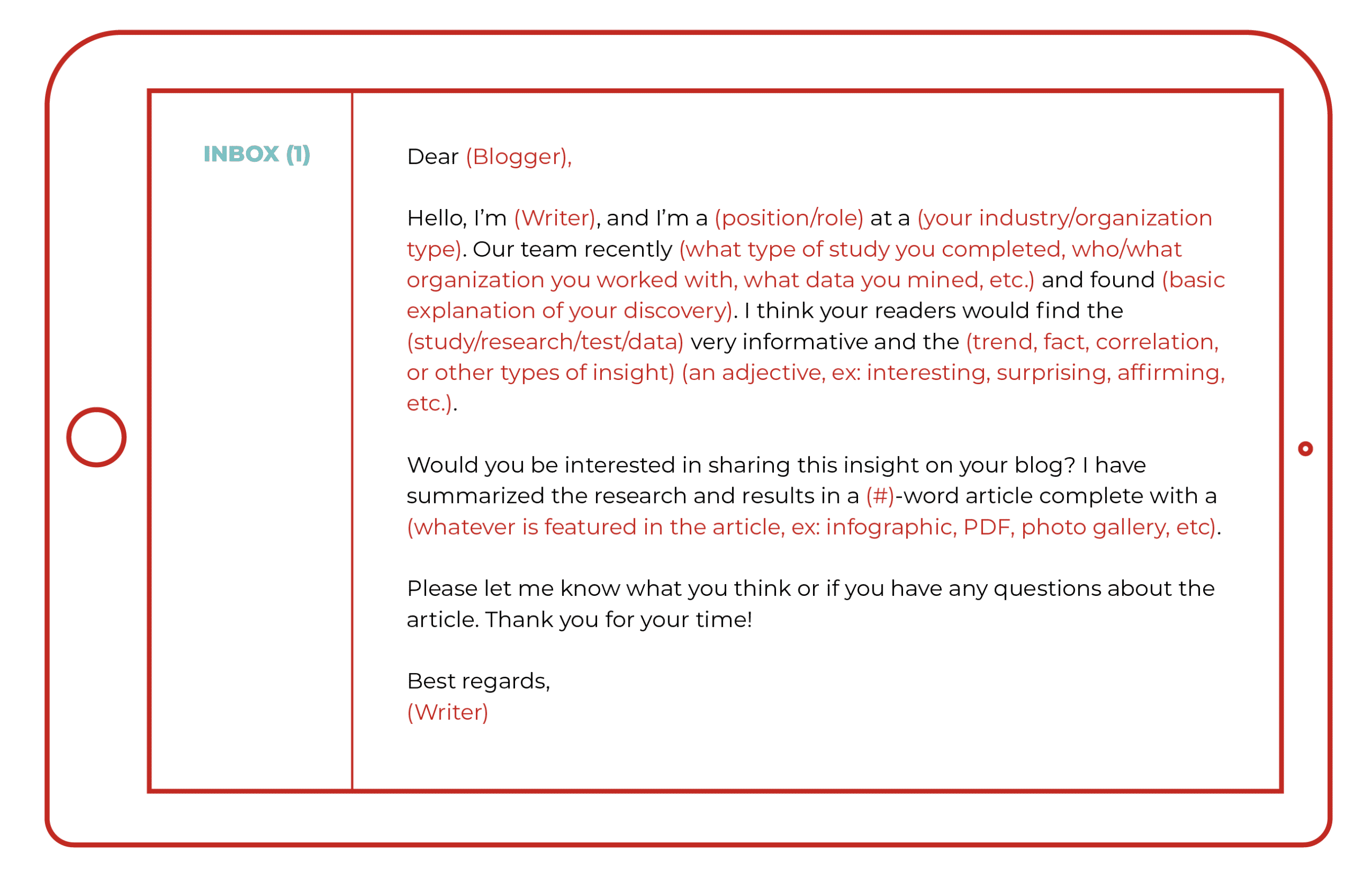Many SEOs and digital marketers find that securing backlinks is one of the more vexing quality indicators considered by Google. By design, link building requires assistance and votes of confidence from others. For many SEOs, asking for links may feel daunting or unnatural, given the competitiveness of digital marketing.
Fortunately, guest posting allows organizations to distribute links in such a way that benefits all parties involved. When a business or other online entity offers high-quality content to outside blogs and publications, with a link to their domain included, everyone wins: the company secures a link and the blog receives useful content for their readers to enjoy.
In order to seal such a deal, you have to reach out to relevant websites and pitch your content. With a single email, you have to convince the blogger or site manager that your content will serve their audience and meet their quality standards. To do so, you’ll need a solid and persuasive pitch.
The Basics: Best Practices for Email Outreach
Successful link building relies on establishing reliable connections via email. Before deciding on an angle to take to present your content, be sure to refresh yourself on the fundaments of email outreach etiquette:
- Address the recipient by name with the correct spelling.
- Establish your own credibility.
- Keep it short and simple.
- Make it obvious what you’re asking for and what you’re offering.
- Match the brand’s tone.
- Use industry-specific terminology.
- Double-check your grammar before hitting send.
- Avoid sending emails Friday afternoon and Monday morning.
Guest Post Pitching Strategies
You can think of guest post outreach emails as elevator pitches for your content. Imagine, if an article could talk and apply for a job, what would it tell the interviewer to convince them to hire it? Outreach emails should be short and sweet and, above all, persuasive.
While it’s perfectly fine to use templates for structure and guidance, each email you send should be personalized and content-specific. If you find yourself at a loss for words when pitching an article, consider using one of the following angles to present your pitch.

1. Trends and Timeliness
Bloggers and influencers entice readers with timely content that focuses on current trends. In some industries, keeping up with the most current events, fashion, tech developments, or consumer habits requires more time and resources than the blogger has available.
If you have content that focuses on a trend or addresses a very of the moment topic, you should pitch it to a blog and instill a sense of urgency. If bloggers feel like they’re slipping behind their competition or missing content that their readers are looking for, they’ll likely take you up on your offer and post the article right away.
Just be sure that your article is different enough from all the others online and to convey this in your email.

Example Email:
Dear Alyia,
Hello, I’m Vanessa, and I’m an avid reader of your coffee blog. As a compulsive coffee drinker myself, I researched dalgona whipped coffee after seeing all the buzz about it online. My research made me think of a couple of variations of the drink that would be easy to make, and I wrote an article with a few recipes.
I noticed that you don’t have a post about dalgona on your blog, and wanted to offer up the content I wrote. I think it’d be a perfect trend piece for your blog considering all the current hype.
Would you accept this contribution? Please let me know if you have any questions about the article. Thanks for your time!
Best regards,
Vanessa

2. Invested Interest
When it comes to requesting links via guest posts, a little bit of flattery goes a long way. However, the praise has to sound genuine; otherwise, the email recipient will write you off as insincere or self-serving. The best way to compliment a blogger is to prove your invested interest in their platform.
In your email, be sure to mention at least one specific post and details from that article. Simply stating the title of one of their blog posts won’t convince them of your sincerity. Rather, you should ask a direct question or share an insight that you took away from their content.
Then, transition into your direct pitch by explaining how your content relates to theirs or would appeal to their readership.

Example Email:
Dear Susanna,
Hello, I’m Mateo, and I’m a writer for a California-based wildlife preservation non-profit. I recently read your article “7 Ways Students Can Encourage Eco-Friendly Practices at School” and loved your ideas. I found the section about student-run recycling programs beneficial and forwarded the article to a few of our high school volunteers.
Our organization is actually trying to engage with a younger audience, and I think having a link from your blog would go a long way. I wrote an article titled “You’re Never Too Young to be an Environmental Activist,” and I’m wondering if you’d consider featuring it on your blog.
Please let me know what you think or if you have any questions about the article. Thanks for your time, and for all you do to spread climate change awareness.
Best regards,
Mateo

3. Exclusive Industry Insight
Especially if you develop scientific, technical, or data-driven content, offering an exclusive insight is a highly-effective way to pitch guest posts. Within competitive niches, bloggers and site editors look for content that will set them apart from the rest.
Any research and data-based articles that reveal a useful industry insight will help a blog build its credibility and traffic. And pitching the post to a website exclusively will encourage them to act fast. Just be careful not to give away the details of your discovery before they agree to publish your article.

Example Email:
Dear Nya,
Hello, I’m Jamie, and I’m a content writer for a health and fitness brand. Our team recently worked with a researcher from a top-ranked university and found an intriguing correlation between wearing a fitness tracker and weight loss. I think your readers would find the study very informative and the trend that we discovered a bit surprising.
Would you be interested in sharing this insight on your blog? I have summarized the research and results in an 800-word article complete with an infographic of the data collected.
Please let me know what you think or if you have any questions about the article. Thank you for your time!
Best regards,
Jamie

4. Content Preview
Bloggers and online editors don’t want to be surprised when they open the attachment for a guest post. Sometimes, the easiest way to convince a blogger to use your content is to summarize the article, plain and simple. While you don’t want to go into great detail in your initial outreach email, you should give enough of a preview to pique their interest. A few tactics include:
- Sending a compact outline that just features the section headers within the article
- Describe in the outreach email an infographic or other asset that’s included in the post
- Including the introduction, lede, or first scene
- Writing a straightforward, one-paragraph summary
- Making a bulleted list of the main points or facts of the article

Example Email:
Dear Simon,
Hello, my name is Corinne, and I’m a designer at an interior design company. I follow your blog on the minimalist lifestyle and thought you might be interested in an article I wrote. The article follows this outline:
Title: “An Interior Designer’s 5 Tips for Furnishing a Modern, Minimalist Home”
- Put utility first
- Stick to only a few colors and materials
- Look at the legs on every piece of furniture you consider
- Focus on shape before texture
- Complete the look with glass and mirrors
Would you consider featuring this article on your blog? Please let me know if you have any questions. Thanks for your time.
Best regards,
Corinne

5. Utility
More than anything, bloggers want content that they’re readers will find interesting, engaging, and useful. One of the most persuasive strategies for email outreach is highlighting the actionable information within your proposed content. Whether your article features a recipe, a how-to, tips, infographics, diagrams, downloads, tools, or another type of resource, make the utility of the content clear in your pitch.

Example Email:
Dear Greg,
Hello! My name is Amalia, and I write content geared towards high school and college students. I’ve found that many high school seniors don’t know how to assess their chances of getting into certain colleges. I put together a comprehensive 10-step guide that students can use to choose their reach, target, and safety schools based on their GPA, class rank, SAT scores, and other factors. The article includes numerous resource links and formulas to calculate percentiles.
Would you consider featuring this article on your blog? I think your readers would find it useful. Please let me know if you have any questions. Thanks for your time!
Best regards,
Amalia
Tools and Resources
While email outreach can be time-consuming, the links acquired through outreach emails will directly improve your website’s SEO performance. Fortunately, countless online resources make creating and distributing guest posts easier and more effective.
- Tool: Boomerang
Use: Email scheduling
- Tool: Ahrefs Site Explorer
Use: Can be used to track your competitor’s backlinks, giving you an idea of what websites to target for outreach.
- Tool: Ahrefs Batch Analysis Tool
Use: Analyzes site metrics, allowing you to choose which sites are worth pursuing for backlinks.
-
- Tool: Buzzstream
Use: Comprehensive link building tool with customer relationship management
- Tool: Content Ideas Generator by SEMrush
Use: Comes up with article title ideas to help you come up with content.
- Tool: Blog Search Engine
Use: Helps identify blogs within a specific niche.
Building Mutually-Beneficial Connections
Building links through guest posting boils down to one simple objective: distributing quality content to quality websites. To achieve this, you’ll need to sharpen your skills in persuasion. While email can feel like an impersonal platform, you can use it to establish mutually-beneficial relationships with bloggers, editors, publishers, and influencers in your niche. Once the backlinks start rolling in, you’ll see the direct effect of well-written, strategic content pitches.




